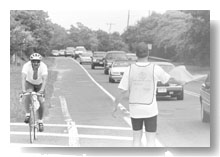Recorded Deeds 08.21.97
Recorded Deeds 08.21.97
AMAGANSETT
Potter to Joseph and Lucy Kazickas, Hamlin Lane, $700,000.
BRIDGEHAMPTON
Loesser (trustee) to Jonathan Molin, New Loper's Path, $200,000.
Powell to Robert Browne, Butter Lane, $150,500.
Jackson to Barbara Slifka, Lumber Lane, $240,000.
EAST HAMPTON
Boondocks Assoc. to Todd and Vicki Elliott, Talkhouse Walk, $269,500.
Wilford to Alda L.L.C., Jones Creek Lane, $800,000.
MONTAUK
McCarthy to Pamela Clinkard, Kettle Hole Road, $322,000.
Greene to Paul and Edward Simon, Cliff Drive, $1,500,000.
Agresti to Jean and Norma Teitel, Benson Drive, $210,000.
NORTH HAVEN
Laskowski estate to Patrick Garelle, Sunset Beach Road, $220,000.
Reina to Victoria Samuels, South Drive, $295,000.
NORTHWEST
Marks to John Narvesen and Mary Wolk, Hand's Creek Road, $321,000.
Cedar Woods Ltd. to the Leisure Tech Group, Owls Nest Lane, $175,000.
NOYAC
Farnsworth to Matthew Willock, Deerfield Road, $260,000.
SAG HARBOR
Black to Lawrence Siegel and Kent Fritzel, Wildwood Road, $210,000.
52 Redwood Rd. Corp. to Gayle Pickering, Redwood Road, $1,227,000.
SAGAPONACK
Shepard to Margarita Bailey and William Easton, Greenleaf Lane, $557,500.
SPRINGS
Epstein to Katherine Peabody, Renee's Way, $190,000.
Lewis to Martin Atkin, Louse Point Road, $625,000.
Mackin to Conrad Marsicano, Bryant Street, $160,000.
Gassett to Ian and Carolina Irving, Old Stone Highway, $347,000.
WATER MILL
Smith (referee) to Citibank, Halsey Avenue, $440,000.
Turtle Cove Realty Corp. to Quincetree Landings Ltd., private road, $160,000.
Solomon to Robert and Mary Sculthorpe, Holly Lane, $1,308,500.

